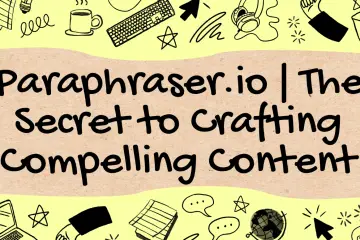The digital world never stands still. The options for access and use are constantly changing – and with the requirements placed on online marketing topics. This is also the case when it comes to website content.
Because a lot has changed since the websites at the end of the 90s, which were little more than text documents. The smartphone has been the biggest revolution of the past decade. Nowadays, mobile internet use is hard to imagine.
So that you too can react successfully to the new user behavior of your target group, we offer you 7 valuable tips for creating a mobile-friendly website to create content.
Quick knowledge to take away:
- People use the Internet primarily using a mobile, which is why the website content has to be adapted to usage behavior
- The amount of text itself should potentially be reduced, clearly structured, and adapted to reading on small screens
- Understandable content elements, which provide all information at a glance, are more in focus (images, videos, graphics, interactive buttons …)
Why we need to rethink website content
Not only since Google’s Mobile First Index has it been clear that something has changed. Because this new way of indexing websites was just a reaction to the changed user behavior.
According to Statista, since 2018 more people have been using the Internet via smartphone than via desktop (PC or laptop).
One might think: What does that have to do with website content to do? The answer is a lot! After all, a smartphone is a completely different device than a laptop. This applies both to the screen, which differs significantly in size, and in the usage (touchscreen vs. keyboard/mouse/touchpad).
So if you continue to produce website content primarily for desktop viewing, you are making a big mistake: you are ignoring the changing usage behavior of your target audience. That means: If you want to successfully communicate content, you have to completely rethink mobile use.
The different forms of website content
Before we get to our tips for mobile-friendly website content, let’s be clear: there are different forms of content, and not every tip applies seamlessly to every format.
Basically, you have it on every website with different content types to do such as e.g.:
- blog/magazine/how-to article
- Service description
- Product Description
- Mandatory texts (imprint, data protection)
- Company presentation
These different types of content not only differ in their specific goal, but also in the way how this content is ideally implemented should.
For example, people are used to blog articles being very text-heavy. When we click on a blog, we set ourselves up to read more.
However, if we find out about the services of a company, we might want to know in a nutshell what we are getting ourselves into.
The following tips are mainly based on the website content that does not take place in the blog/magazine section. But even for such content, many of the tips should be heeded and only individual points can be neglected.
7 simple tips for mobile-friendly website content
1. Write short (paragraphs) sentences
Especially on mobile devices, there is an overview difficult to manufacture. The screen is small and the text is even more overwhelming than on the desktop. It is therefore important that you structure your texts in short paragraphs.
This means that you should insert white space regularly. In terms of reading flow, it is significantly more motivating if we can already see the next paragraph on the cell phone screen.
By the way, the same goes for the sentences themselves. No one wants to read a block of text that forces them through several lines until they finally get to the point. This is especially true on a smartphone or tablet.
So make sure to keep your sentences short. Of course, there can also be a longer sentence in between, which stretches over two lines. That creates a rhythm of speech. But sentences and paragraphs should not be much longer than two lines.
2. It depends on the font
Readability is the be-all and end-all in mobile view. So when you decide on a font and the corresponding sizes, keep in mind that they should be as good and easy to read as possible on mobile devices.
By the way, this also applies to headings. Here you have to make sure that hierarchically higher headings (e.g. H1 or H2) is not too big in terms of the font size. If a headline takes up half the smartphone screen, find solutions using boldfaces or colors instead.
This is how you create a website that, in terms of text alone, can be consumed sensibly on mobile devices.
3. Don’t focus too much on text
As a passionate copywriter, it really hurts to admit that: Texts aren’t everything on a website. Of course, the specific content format is also important here. A magazine article (e.g. this blog article) can of course be more text-heavy due to the format. SEO aspects play an even greater role here.
However, when it comes to product or service descriptions, it makes much more sense these days to be brief. This leads to a completely new way of thinking when it comes to designing a website. Do not plan too much from the text, but understand your website as a multimedia document.
We need to get away from looking at a website like a simple text document. Rather, it is the mixing of the most diverse media formats, none of which is more important than the other. Rather: It’s always about expediency. And text isn’t always the best tool in a mobile world.
4. Finding solutions with content items
This fourth tip follows logically from the previous explanation. If we think of websites less in terms of text, then other content elements play an increasingly important role.
In concrete terms, this means: In terms of diversity of content, you should always make sure that you use different content elements. These include e.g. Images, videos, audio formats, interactive elements, diagrams, and much more
Of course, the question of purpose is paramount here as well. It doesn’t make sense to use content elements indiscriminately just for their own sake. Instead, you should always ask yourself: What is the best way to communicate my content?
Sometimes it will be a text. However, sometimes a diagram can represent in a simple way what would otherwise have been several hundred words. So always think about what you want to communicate to whom – and what the optimal content element for this looks like.
5. Easy to scan
Again, everyone who creates content bleeds again once the heart: People don’t read websites. At least not in the traditional way to read a book. Rather, content on the web is scanned until the relevant information is discovered.
This is because we often only want to read a certain aspect of long advice texts, for example. For example, people google to look for the symptoms of diseases and then really want to read the symptoms – and not directly the healing method or a definition of the disease.
So pay attention. Make sure your content is clearly segmented and easily scannable. These include also highlighting individual key terms by color or bold. A clear headline structure also ensures clear scrolling.
By the way, easy scannability also includes the topic of prioritization. You should take care to structure your website content as logically as possible and build on one another.
A negative example: recipe blogs often overwhelm readers with a long desert of text about the history of the recipe with inserts from the life story of your own grandmother. The recipe, which is why you are actually on the page, can only be found at the very end. Clearly wrongly prioritized – and on mobile devices, you quickly lose your appetite. Instead, present the recipe at the beginning.
6. Consider the navigation
Navigation is always an important topic on the smartphone screen. Because we have a fixed header menu and cross-links on the side or similar in the desktop version of the website content. can work, the possibilities on the mobile screen are more limited.
Oftentimes, there is only the so-called burger menu, which you can fold out to the side and which works rather mediocre overall if it is also one of the best solutions so far.
It is accordingly important that you offer options for navigation. For longer magazine articles, add a table of contents with jump marks a. In this way, users can go directly to the appropriate paragraph of the article.
In the case of product pages, you can use buttons that always offer the possibility to jump directly to the contact form or to the purchase. In addition, it makes sense to offer the option at the bottom of the page to jump back to the top.
7. As short as possible, as long as necessary
When you create content, you don’t get paid by characters or the number of words. Because nobody can estimate in advance how long an article should be – especially since we have already noticed several times that website content should no longer be thought of solely from the text side.
The rule of thumb applies accordingly: as short as possible, as long as necessary. Whenever things seem redundant, cross them out. Whenever a sentence doesn’t really add anything to the content, remove it. A picture doesn’t really serve any purpose? You already know what you have to do with it…
This creates websites that condense all the relevant information for the Provide Target Audience. They get to the point faster and are therefore much more pleasant to consume. At the same time, such high-density content is often more compelling.
Create website content that will continue to perform well
In the digital world, developments are happening at lightning speed. It is therefore important that you always stay on the ball and keep up with the times. So check your website critically and question whether your website content meets all the criteria to still be productive.
Because you only have a chance of reaching them with your messages if you adapt to the changed usage behavior of your target group. What are you waiting for? Bring your website content up to date!








